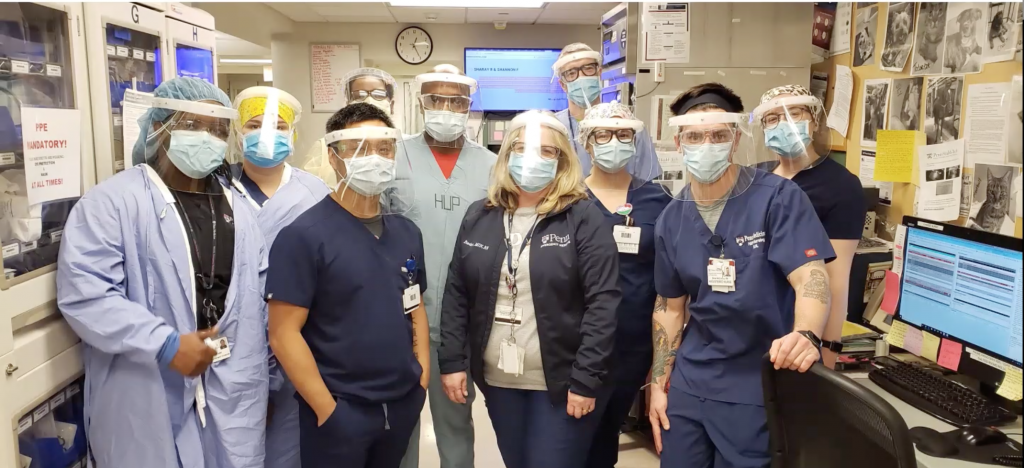Alumni panelists:
Luke Carlson (Apple), Jenny Chen (Airbnb), Qi Fang ( IQVIA), Marty Gindi (Signant Health), Alwyn Goodloe (NASA Langley Research Center), John Hewitt (Stanford University), Derek Jobst (RaiseMe), Kavya Lakshminarayanan (Microsoft), Spencer Lee (Epic Systems), Sudarshan Muralidhar (Igneous Systems), Sneha Rajana, Ishan Srivastava (Microsoft – Applied AI Group), Joey Schorr (Red Hat, Inc (part of IBM)), Robert Zajac (Two Sigma)
Teams:
Team 1: RoadX: An Automated Road Defect Inspection System
Members: Mei Chung, Arnav Jagasia, Mark Lewis, Adele Li, Jeffrey Zhou
URL: https://github.com/arnavjagasia/RoadX
Team 2: PRECEPTA: Ethical AI for Safer Retail
Members: Xinran Han, Ho-Wa-Jonathan Mak, Philippe Sawaya, Rahul Shekhar
Team 3: Trailblazing in forestry: automatic biomass prediction
Members: Adam Kirsh, John Mings, Ethan Perelmuter, Nathan Rush, Maria Turner
Team 4: Gigfitter: A personalized scheduling App for Gig Economy Workers
Members: Cameron Cabo, Jeffrey Chen, Minjae Kwon, Hao Lei
URL: https://github.com/jordanlei/gig-economy
Team 5: CoParse: Performance-enhancing document reader for legal contracts
Members: Jacob Beckerman, Josh Doman, Sarah Herman, James Xue
URL: https://coparse.com/
Team 6: AMiAI: Using ML Models to Generate Product Reviews
Members: Sherjeel Arif, Srinath Makesh, Aavo Reinvald, Andrew Si
Team 7: Newsfluence: Identifying influential entities in news-related tweets
Members: Jack Buttimer, Matthew Kongsiri, Siyuan Liu
URL: http://newsfluence.org/
Team 8: Evidence Retrieval for Ethical Investing
Members: Edward Cohen, Samuel Davis, James Feng, Joseph Goodman, Thomas Kumpf
Team 9: Addressing news bias through browsing behavior
Members: Azzam Althagafi, Roopa Chandra, Claire Donovan, Jennifer Jun
URL: https://github.com/roopachandra/senior_design_9
Team 10: Forage: Savings for EBT recipients
Members: Jacob Goldman, Daniel Leiser, Salomon Serfati, Ajay Vasisht
Team 11: Spry: Aging at home made easier using IoT technology
Members: Tanusri Balla, Megan Kotrappa, Christopher Lin, Emily Tan, Spencer Weiss
Team 12: Compiler optimization for ELM
Members: Paul Palmer, John Powell, Vighnesh Vijay
DEMO: https://vimeo.com/412528445
URL: https://github.com/pzp1997/elm-compiler
Team 13: Remora: Transferring resource-intensive computational tasks between personal devices in real time
Members: Sam Akhavan, Hana Pearlman, Weizhen Sheng, Jane Xu
Team 14: Gamifying Physical Therapy Using Virtual Reality
Members: Alexander Chea, Yi Ching, Vijay Ramanujan, Anelia Valtchanova, Leon Wu
Team 15: doBetter deBugging
Members: Amit Gupta, Changwook Shim, Hannah Walsh, Zhijing Wu
DEMO: https://www.youtube.com/embed/82ITFJS1xUo
Team 16: Data Synchronization
Members: Suyog Bobhate, Tsz Lam, William Sun, Zeyu Zhao, Zhilei Zheng
Team 17: Personalizing Physical Therapy via Muscular Feedback
Members: Makarios Chung, Delender McCants, Vinaichandra Rachakonda, Saniyah Shaikh, Abdullah Zaini
DEMO: https://drive.google.com/file/d/135p6lL0RjS3mS1vGq_rWepT1ZFhKDZIU/view
Team 18: SmartCare
Members: Walter Chen, Kehao Lou, Ria Nagar, Haoxuan Yuan
Team 19: Online OH Queue
Members: Steven Bursztyn, Christopher Fischer, Monal Garg, Karen Shen, Marshall Vail
Team 20: Inventory Management and Predictions for Local Restaurants
Members: Mehmet Alaca, Natasha Gedeon, Maxwell Giancaterino, Deniz Kecik, Juliana Sales
DEMO: https://drive.google.com/file/d/1xqzlu2jP6Vq1eBuAJktZM0-BDl8be9Uf/view
Team 21: Goal-laborator: A social platform that promotes wellness by establishing habits through collaboration and competition
Members: Pranjal Goel, Nishita Jain, Wellington Lee, Shirali Shah
URL: https://goal-laborator.herokuapp.com
DEMO: https://youtu.be/CEemC7cZgZg
Team 22: Batmanhood: A network driven portfolio manager
Members: Samuel Fleischer, Ranwei Hu, Michael Lu, Saran Mumick, Wei Zhang
Demo: https://drive.google.com/file/d/1I-CBEXVgzmD_FjibjWML6NfX758aRUhh/view
Team 23: Keep.id: Empowering the homeless through secure ID storage
Members: James Bigbee, Connor Chong, Steffen Cornwell, Alexander Do, Gregory Kofman
Team 24: Lex: A Community for the Curious
Members: Sydney Essex, Vibhav Jagwani, Rohan Menezes, Pranav Pillai, Harrison Silver
URL: https://www.learnonlex.com/
Team 25: Online Music Streaming via Collaborative Recommendations
Members: Somil Govani, Dominic Holmes, Sanjit Kalapatapu, Nihar Patil
Team 26: Adio: Location-based audio advertising for rideshare
Members: Sneha Advani, Bharath Jaladi, Arjun Lal, Romit Nagda, Sneha Rampalli
DEMO: https://drive.google.com/file/d/1gP__Q-by4EjCBGIrZES2f9nkyIRFgNWk/view
Team 27: BlockIt: Time blocking, made easy
Members: Griffin Fitzsimmons, Rishab Jaggi, Jaeyoung Lee, Ezaan Mangalji
DEMO: https://www.dropbox.com/s/tga2jw8s7qj6hyo/App%20Demo.mp4
Team 28: CityRun: The User-friendly scenic route generation
Members: Taras Bukachevskyy, Allison Domm, Luigi Mangione, Sierra Mills, William Morrissy
DEMO: https://drive.google.com/file/d/1tXzxQUlYZku1cJLOIAp7-Ok28auNPU7l/view
Team 29: Sparrow: A Travel Itinerary Recommendation System for Groups
Members: Victor Chien, Jesse Cui, Alexander Lichen, Akshay Malhotra, Linzhi Qi
Team 30: Where2Go: Resource Mapping for Non-profits
Members: Vicente Guallpa, Katie Jiang, Stephanie Shi, Erik Zhao
DEMO: https://drive.google.com/file/d/1riaBG2VTN-K-Qz18QqmEErhA4Rq9WAf5/view
Team 31: PhilaForm: Simplifying the tax abatement process
Members: Stephen Eyerly, Vincent Gubitosi, Anant Kumar, Paul Lorenc, Tianyu Yin, Natalie Wiegand
URL: https://philaform.herokuapp.com/
Winners:
Technical sophistication: Team 5: CoParse: Performance-enhancing document reader for legal contracts
Creativity: Team 14: Gamifying Physical Therapy Using Virtual Reality
Societal impact: Team 19: Online OH Queue
Alumni’s choice: Team 16: Data Synchronization


